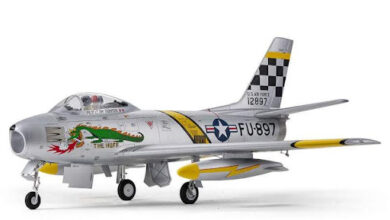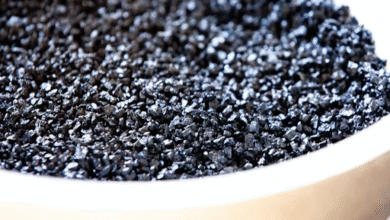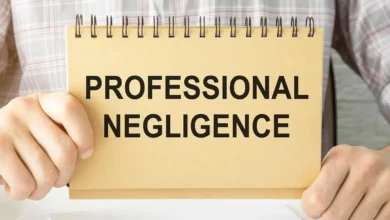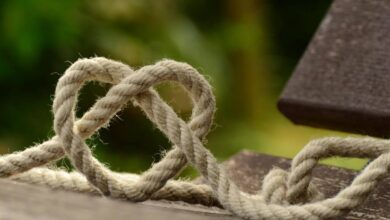The Art of Illumination: Stage Lighting Rental in Orlando for Every Occasion
So I’m at this corporate thing last Thursday night, right? Basic hotel ballroom, nothing fancy. But then around 7 PM, something crazy happened. The lighting guy starts doing his thing, and suddenly this boring beige room becomes this warm, inviting space that actually makes you want to hang out. People who were checking their phones five minutes earlier are now laughing and actually talking to each other.
That’s my “aha” moment every single time. I’ve been doing events in Orlando for about 15 years now, and I still get excited watching a good lighting setup transform a space. It’s not just about making things prettier (though that’s nice too). It’s about completely changing how people feel when they walk into your event.
And honestly? In Orlando, you kind of have to bring your A-game. People here are used to Disney-level production values. They expect a little magic. So if you’re planning anything from a wedding to a huge conference, understanding lighting isn’t optional anymore. It’s what separates the events people remember from the ones they forget by Tuesday.
The Real Reason Lighting Matters
Okay, bear with me for a second because this gets a little nerdy, but it’s important. Your brain reacts to different types of light in very specific ways. It’s not some mystical thing – it’s biology.
You know how you feel completely different under those harsh grocery store lights versus sitting by a campfire? That’s your brain processing light temperature and intensity. Bright white light makes you alert but also a little on edge. Warm, dim light makes you relax and open up to people around you.
I saw this play out perfectly at a wedding I did at Lake Eola Park. During cocktails, we bathed everything in soft golds and pinks. People were mingling like crazy, laughing, really connecting. Then we shifted to cooler blues and purples for dinner – more sophisticated, elegant. By the time we hit the dance floor with those moving lights and bright colors, everyone was ready to party.
Same people, same venue, but we basically guided them through different moods just by changing the lights. Once you understand this, you can control the entire vibe of your event.
Breaking Down the Different Types of Lights
Let me walk you through the main players without getting too technical about it.
Uplighting – Your Best Friend
These are lights that sit on the floor and shoot upward onto walls and ceilings. Hands down the biggest bang for your buck in event lighting. I use them everywhere.
Got a venue with gorgeous brick walls? Hit them with warm amber uplighting and they’ll look like something out of a magazine. Stuck with a generic hotel ballroom? Purple or blue uplighting can hide those bland walls and make the whole place feel intentional instead of accidental.
I did a small wedding last month with maybe $300 worth of uplighting, and guests kept asking which fancy venue it was. Same old community center they’d been to before, just lit properly.
Spotlights – When You Need All Eyes on Something
Pretty straightforward – focused beams that highlight specific areas. Wedding altar, speaker podium, head table, whatever needs attention.
I’m obsessed with using tiny spotlights on centerpieces. Sounds like overkill, but it makes such a difference. People can actually see their food and each other, plus everything looks more upscale. Small detail, big impact.
Moving Lights – The Fun Stuff
These are the lights that actually move around and change colors. They can respond to music, follow people, create patterns on walls. Basically, they’re what makes a regular event feel like a show.
Orlando’s got such a strong entertainment culture that people expect this kind of thing now. I used moving lights at a product launch where they created the company’s logo pattern on the ceiling during presentations, then turned into a full light show afterward. Same equipment, totally different vibe.
LED Walls and Video Stuff
More events want video elements now. Company presentations, wedding slideshows, live social media feeds, whatever. LED walls let you integrate all that visual content with your lighting design.
Did a tech conference where the walls showed live data visualizations while the room lighting changed colors to match. Sounds complicated, but it was actually beautiful and really drove home what the company was about.
Gobos – Custom Projections
Think of these as stencils for light. You can project logos, patterns, monograms, whatever onto surfaces. Great for branding corporate events or adding personal touches to weddings.
Wash Lights – The Workhorses
These just provide general, even lighting across big areas. Not glamorous, but essential. Good wash lighting is invisible when it’s working right, but you definitely notice when it’s missing.
Why Buying Your Own Lights Is Usually a Bad Idea
People ask me about this all the time. “Should I just buy some lights instead of renting every time?” Almost always, no.
The costs are insane. A decent moving light runs $3,000 to $5,000. LED walls? You’re looking at $20,000 and up. Even basic uplighting gets expensive when you need enough fixtures for a real event. When I compare the economics of stage lighting rental Orlando versus buying, rental wins every single time.
But money isn’t even the biggest issue. This technology moves fast. Equipment I was using five years ago looks dated now. LED lights keep getting better, everything’s going wireless, new features pop up constantly. When you rent, you get the latest stuff without worrying about your investment becoming worthless.
Then there’s all the practical stuff nobody thinks about. These lights are heavy and fragile. You need trucks to move them and people who know how to set them up safely. Rental companies handle all that, plus they maintain everything and provide tech support during your event.
Most important though? Rental companies know what they’re doing. A good lighting designer doesn’t just drop off equipment and leave. They understand how different lights work together, how to adapt designs to your venue, and how to fix problems when things go wrong.
Real Events, Real Results
Let me tell you about some recent gigs that show what’s possible.
Orlando hosts tons of corporate conferences, and these events get complicated. I worked on this medical conference that had three different spaces: main auditorium for presentations, networking areas for breaks, and exhibition halls for vendors. Each space needed completely different lighting that still felt connected.
Main sessions got bright, clean lighting that looked good on camera and kept people awake. Networking areas used warmer, softer lights that encouraged conversation. Exhibition halls had dynamic lighting that drew attention to different booths throughout the day. The rental company I worked with understood all these different needs and made it seamless.
Wedding season in Central Florida keeps me crazy busy. Outdoor venues like Harry P. Leu Gardens are gorgeous but need subtle enhancement. We used gentle uplighting to bring out the natural beauty without competing with it. Ceremony stayed romantic and soft, reception turned into a dance party with lights that moved to the music.
The concerts and festivals here show off the most advanced stuff. I’ve seen shows where hundreds of lights create these immersive experiences that make you feel like you’re inside the music. Everything responds to sound in real time, creating visuals that enhance every single beat.
Finding the Right People to Work With
Not all lighting companies are the same. After working with probably 30 different vendors over the years, here’s what I look for.
Experience with your type of event matters more than you think. Corporate lighting is different from wedding lighting, which is different from concert lighting. Always ask to see examples of events similar to yours.
Technical knowledge is huge but hard to judge if you don’t know the industry. Ask what happens if equipment breaks during your event. Good companies have backup gear and experienced techs who can solve problems fast.
Local venue knowledge gives some companies a big advantage. Orlando has unique venues with weird power situations, tricky load-ins, and specific restrictions. Companies that work your venue regularly know about these issues and can plan around them.
Communication is everything. Your lighting person should ask tons of questions about your goals, budget, and vision. They should explain options in normal language and stay responsive throughout planning.
What’s Coming Next
The lighting world keeps changing, and some of the new stuff is pretty cool.
LED technology has revolutionized everything. Modern fixtures use way less power while producing brighter, more consistent light with better color options. You can do things now that would have been impossible or crazy expensive just a few years ago.
Wireless controls are becoming standard, which opens up possibilities in venues where running cables would be difficult. I can create elaborate designs now in historic buildings or outdoor spaces that couldn’t handle traditional setups.
Integration with other event tech is getting sophisticated. Lighting can respond to social media activity, audience participation, live data feeds. I’ve seen lights that change based on applause volume or Twitter sentiment about the event.
Sustainability matters more to clients now, and LED helps a lot. Modern systems use a fraction of the power older equipment required. Plus rental makes more environmental sense because equipment gets used efficiently instead of sitting in storage.
Creating Something People Remember
At the end of the day, this is all about creating experiences that stick with people. In Orlando, where everyone expects a certain production level, professional lighting can be what makes your event stand out.
Think beyond just making things look nice. What story are you telling? What emotions do you want people to feel? How do you want them to behave in your space? Good lighting design answers these questions and supports your goals.
Start with understanding what you want to achieve, then work with pros who can make it happen. Don’t try to DIY complex lighting unless you really know what you’re doing. The difference between amateur and professional lighting is usually obvious, and it’s not worth the risk.
Lighting is an investment in your event’s success. Whether you’re trying to impress clients, celebrate something important, or create a memorable experience, professional lighting helps ensure people leave talking about your event for all the right reasons.
Orlando has incredible venues and talented people who know how to create magical experiences. Add professional lighting to the mix, and you’ve got everything you need to make events that people remember long after they’ve forgotten what they ate for dinner.

